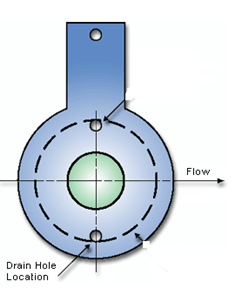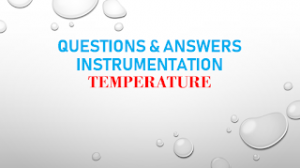1. What is the definition of the Analyzers? Why it is being used in industry? (S/T)
Answer:
It is an instrument used to analysis the gas, liquid or solid to detect the component of interest for improve productivity, checking the quality of the product and the component released to air or water, which can effect the human
life as well as environment pollution.
2. What is the on line Analyzer and why it is required? (S/T)
Answer:
Online Analyzer is analysis the gas, liquid or solid at situ to avoid transportation delays, interference with integrity of the sample. Now a days for improve productivity, maintaining the stringent quality of the product and the component released to air or water, which can effect the human life as well as environment pollution, on line analysis has become must.
3. What are major factor effect the reliability and accuracy of any on line Analyzer? (S/T)
Answer:
The factors affect the reliability and accuracy of any on line Analyzer is temperature, flow and pressure. Further, it may please be looked into that sample is free from any dirt or condensation.
4. What is GC? (S/T)
Answer:
It is physical method of separation that is based on differences in solubility (or adsorption) of the substance between a mobile and a stationary phase. It is elution method, the sample is vaporized as a narrow plug, injected into a carrier gas (a mobile phase) and forced to flow through a small diameter tube containing the stationary liquid phase.
5. How many types of Detector of GC you are aware? (S/E)
Answer: They are Thermal Conductivity Detector (TCD) and Flame Ionization Detector (FID), these are popular for their
simplicity and ruggedness. However some other types are Flame Ionization Detector, Orifice Capillary Detector, Photo Ionization Detector, Electron Capture Detector.
6. What is oven temperature generally maintained for a GC? (T)
Answer:
It depends on the specification and selection of the column, which is generally
70˚C to 100˚C.
7. What are the principles of operation of FPD and TCD type GC? (E/S)
Answer:
FPD: It is Flame Photometric. It detects the element specific to flame emission spectrometer.
TCD: The sensing filament and reference filament is heated electrically in the presence of carrier gas i.e. Hydrogen or Helium due to variation in the concentration of sample thermal conduction of the filament changes. This null
voltage change is detected by the bridge.
8. What are the different parts of a GC? (S/T)
Answer:
These are Analyzer, oven, detector, computer, sample handling unit etc.
9. What is the carrier gas and fuel gas are being used for GC? (T)
Answer:
Carrier gas is Helium or Hydrogen with Nitrogen gases. Fuel gas is Hydrogen.
10. What do you know about column and why the same is being used? (E/S)
Answer: It is capillary SS or Teflon tube of very smaller diameter (1/8”) packed with chemical compound used for separation, getting stationary phase and faster yield of process sample.
11. Why regeneration of the column is required? (T)
Answer: Some time column gets dirt and the action of packed compound gets exhausted. It
is purged with Nitrogen at constant temperature.
12. What are FT, CT, RT, and TT? (E/S)
Answer: FT is Function Table CT is Component Table RT is Retention time TT is trend Table
13. What are the different types of outputs available in standard GC to interface with DCS or any third party system? (E)
Answer: These are 4-20 mA DC, 0-5 VDC, RS 232, RS 485, RS 422.
14. How many types of pressure regulators you are aware? (T)
Answer:
Pressure regulator is a critical component of any analyzer. Mainly high and low pressure regulators are there. It can be of Single stage or double stage. Further it has got different type based on the connection to cylinders DIN 1,
DIN 6, DIN 5, DIN 8.
15. Why some cases the sample lines is steam traced? (S/T)
Answer: Some cases the sample lines is steam traced to remove condensation and to keep the process component in it’s original state.
16. What are span gas and zero gas shall be used to calibrate an analyzer of 0- 1000 PPM H2S? (T)
Answer: Span gas will be 800 PPM± 1% and balance nitrogen. Zero gas will be pure nitrogen or air.
17. What is pH? What are domain for neutral, acidic and alkaline nature of a liquid? (S/T)
Answer: pH is negative logarithm of the hydrogen irons (Proton) activity. Neutral is 7.0 above 7 it is Alkaline and bellow 7.0 it is acidic.
18. Wow the pH of a liquid can be measured? (E/S)
Answer: It can be measured by Litmus Paper or electronically through glass electrode.
19. What the standard solutions are available used for the pH analyzer calibration? (E/S)
Answer: 4, 7, 9 are the standard buffer solution generally available to check pH analyzer.
20. Why auto temperature compensation is must for an online pH analyzer? What type of temperature elements is being used for the same? (E)
Answer: pH varies as per Nernst Equation with the change in temperature. Pt 100 RTD (Resistance Temperature Detector) is used as basic temperature element.







